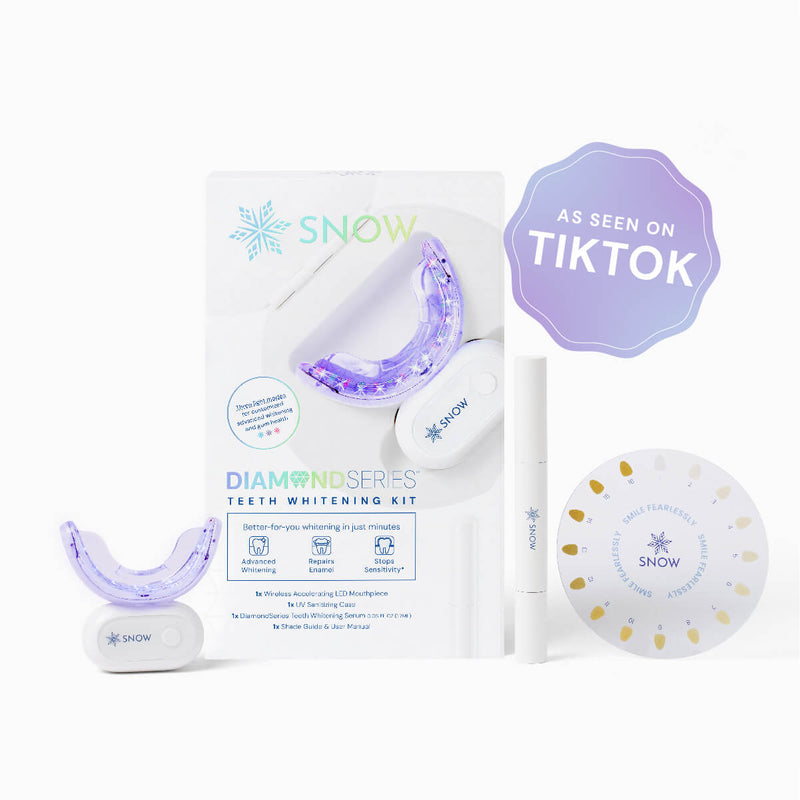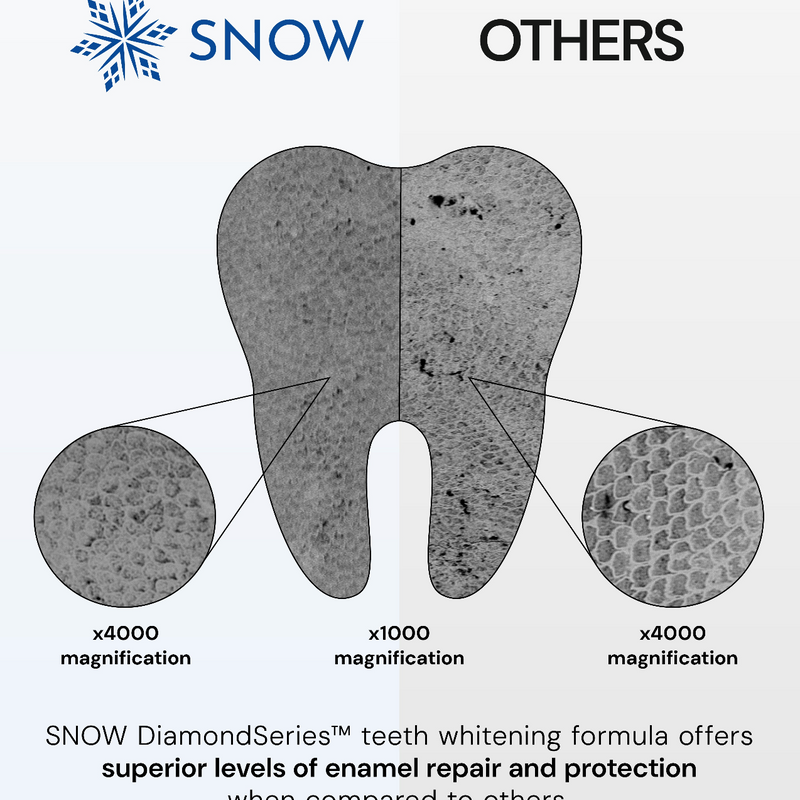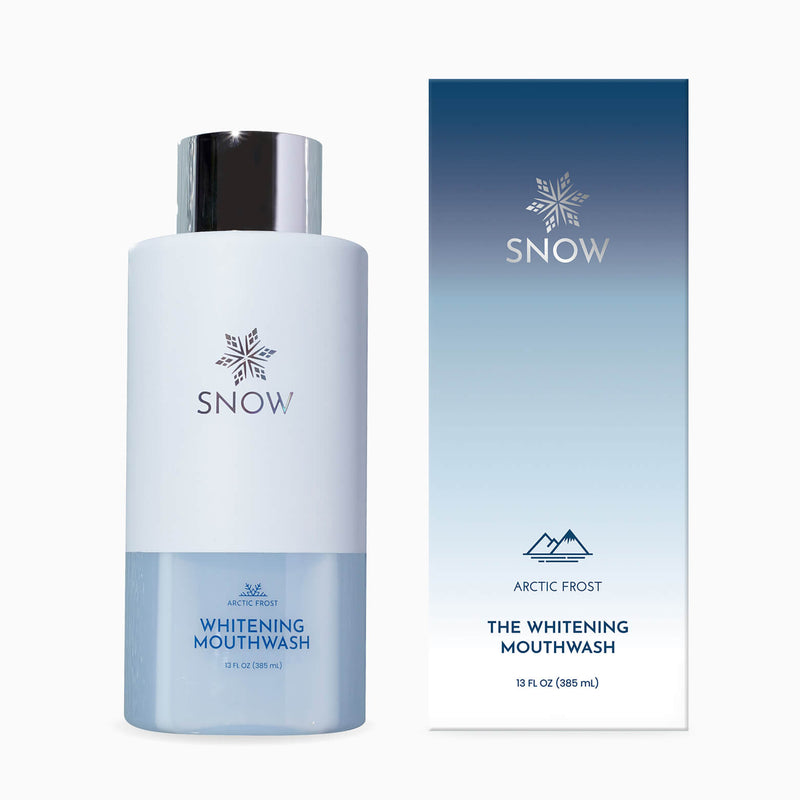Taking care of your teeth is essential for a bright and healthy smile, and one common question that arises is: should you wet your toothbrush before adding toothpaste?
At SNOW, our expertise in dental care confirms that yes, you should wet your toothbrush.
In this article, we will dive into this question and explore whether to wet your toothbrush before or after applying toothpaste, provide tips for effective brushing, discuss brushing in the shower, and outline the recommended frequency for brushing your teeth.
By the end, you'll have a clear understanding of optimal tooth brushing practices for maintaining excellent oral hygiene.
What this article covers:- Should You Wet Your Toothbrush Before Toothpaste?
- Should You Wet Your Toothbrush After Toothpaste?
- Tips to Brush Your Teeth
- Should You Brush Your Teeth in the Shower?
Should You Wet Your Toothbrush Before Toothpaste?
Yes, you should wet your toothbrush before adding toothpaste, but the decision ultimately depends on personal preference and comfort. Wetting the toothbrush can make the bristles softer and the brushing experience more enjoyable, especially for those with sensitive gums.
We've found that the American Dental Association (ADA) doesn't have a strict rule about wetting your toothbrush, but it's essential to brush effectively for about two minutes with a fluoride whitening toothpaste for optimal oral hygiene.
However, some experts argue that wetting the toothbrush before applying toothpaste might dilute the fluoride concentration, potentially reducing its effectiveness in fighting cavities and protecting enamel. Dr. Raha Sepehrara advises that if you find the need to soften your bristles, you might consider using a toothbrush with softer bristles instead.
At SNOW, we recommend using our LED Teeth Whitening Electric Toothbrush and Teeth Whitening Toothpaste for optimal oral hygiene.
These products are designed to provide a superior brushing experience, combining effective cleaning with the added benefit of whitening your teeth.

Should You Wet Your Toothbrush After Toothpaste?
Yes, you can wet your toothbrush after applying toothpaste, but moderation is key.
Wetting the toothbrush after applying toothpaste helps the toothpaste to foam more quickly, which can assist in spreading it evenly across your teeth.
However, moderate water use is important. Using too much water might dilute the toothpaste and reduce its effectiveness in removing plaque and protecting your teeth.
We highly recommend that you rinse your toothbrush thoroughly after brushing to remove any remaining toothpaste and debris. This ensures your toothbrush is clean and ready for the next use.
Tips to Brush Your Teeth
Brushing your teeth effectively is essential for maintaining oral health and ensuring a bright smile.
This section will provide detailed tips on how to brush your teeth correctly, ensuring you get the most out of your daily oral hygiene routine.
Each tip is designed to help you improve your brushing technique and maintain healthy teeth and gums.
Use A Soft-Bristled Toothbrush
Using a soft-bristled toothbrush is crucial to avoid damaging your gums. Hard bristles can cause gum irritation and even lead to gum recession.
Our research has shown us that a soft-bristled brush is effective in removing plaque and debris without causing harm to your gums and teeth.
For an enhanced brushing experience, consider using the SNOW LED Teeth Whitening Electric Toothbrush, which combines thorough cleaning with gentle care.
Brush At A 45-Degree Angle
Brushing at a 45-degree angle to your gums helps remove plaque and bacteria from the gumline effectively. This technique allows the bristles to reach under the gumline and clean out any accumulated plaque, which is essential for preventing gum disease and maintaining overall oral health.

Brush For At Least Two Minutes
It's important to brush your teeth for at least two minutes, twice a day. This duration ensures that all surfaces of your teeth are adequately cleaned.
According to the Mayo Clinic, thorough brushing helps remove more plaque and reduces the risk of cavities and gum disease. Using a toothbrush with a built-in timer, like the SNOW LED Teeth Whitening Electric Toothbrush, can help you stick to this recommended brushing time.
Replace Your Toothbrush Regularly
Replacing your toothbrush every three to four months, or sooner if the bristles are frayed, is vital for effective brushing.
Worn bristles are less effective at cleaning teeth and can harbor bacteria. Regular replacement ensures that your toothbrush remains effective in maintaining your oral hygiene.
Choose A Quality Toothbrush
Using a quality toothbrush, such as the SNOW LED Teeth Whitening Electric Toothbrush, can significantly enhance your brushing routine.
This toothbrush combines thorough cleaning with teeth whitening, ensuring your smile remains bright and healthy.
Its advanced features, such as soft bristles and a built-in timer, provide an optimal brushing experience.
Incorporating these tips into your daily routine will help you maintain excellent oral hygiene and a bright, healthy smile. For a more thorough clean, consider using the back of the toothbrush to gently scrub your tongue
Should You Brush Your Teeth in the Shower?
Brushing your teeth in the shower might seem convenient, but it's not typically recommended.
The humid environment can promote bacterial growth on your toothbrush, and you might be tempted to rush your brushing routine.
For the best results, it's advisable to brush your teeth at the sink where you can dedicate proper time and attention to your oral hygiene.

Humid Environment Concerns
The humid conditions in a shower can create an ideal environment for bacterial growth on your toothbrush.
Storing a toothbrush in a moist environment can promote the proliferation of bacteria, which can be harmful to your oral health.
Risk Of Rushing
When brushing your teeth in the shower, you might be more likely to rush the process. Effective brushing requires at least two minutes of careful attention to ensure all surfaces of your teeth are cleaned.
Rushing this process can lead to inadequate plaque removal and potential oral health issues.
Focus On Oral Hygiene
Brushing at the sink allows you to focus entirely on your oral hygiene routine. You can maintain proper brushing technique and ensure you're not missing any areas.
Brush your teeth twice a day for at least two minutes with fluoride toothpaste to effectively remove plaque and prevent cavities.
Proper Toothbrush Storage
To maintain optimal hygiene, store your toothbrush in an upright position and allow it to air dry. This practice helps reduce bacterial growth compared to leaving it in a damp environment, such as the shower.
Regularly replacing your toothbrush every three to four months, or sooner if the bristles are frayed, is also essential for effective cleaning.
While brushing your teeth in the shower may save time, it is best to stick to brushing at the sink to ensure proper hygiene and thorough cleaning. This will help maintain your oral health and reduce the risk of bacterial contamination on your toothbrush.

Conclusion
Whether you choose to wet your toothbrush before or after applying toothpaste is a matter of personal preference, as both methods have their pros and cons, but maintaining good oral hygiene practices is most important.
The essential part is that you brush effectively, use a fluoride toothpaste, and replace your toothbrush regularly.
At SNOW, we are committed to providing high-quality dental care products to help you achieve your best smile. For more information on our SNOW LED Teeth Whitening Electric Toothbrush and other products, check out our DIY teeth whitening options.
By following these guidelines and using the right tools, you can ensure your teeth stay clean and your smile bright.
If you want to learn more, why not check out our related posts:
- Electric Toothbrushes on Planes
- Are Electric Toothbrushes Good for Your Teeth
- What Is the Best Travel Electric Toothbrush
- Should You Brush Your Lips with a Toothbrush
- How Long Does an Electric Toothbrush Take to Charge?
- Best Electric Toothbrush Heads
- How Long Should You Brush Your Teeth With an Electric Toothbrush?
- How Long Does Herpes Live on a Toothbrush?
- Are Electric Toothbrush Heads Interchangeable?
- How Long Does It Take for a Toothbrush to Dry?
- What Are Toothbrush Bristles Made of?
- How Many Bristles Are on a Toothbrush?
- Are Soft Toothbrushes Good?
- Electric Toothbrush Side Effects
- Do Electric Toothbrushes Have Lithium Batteries?
























